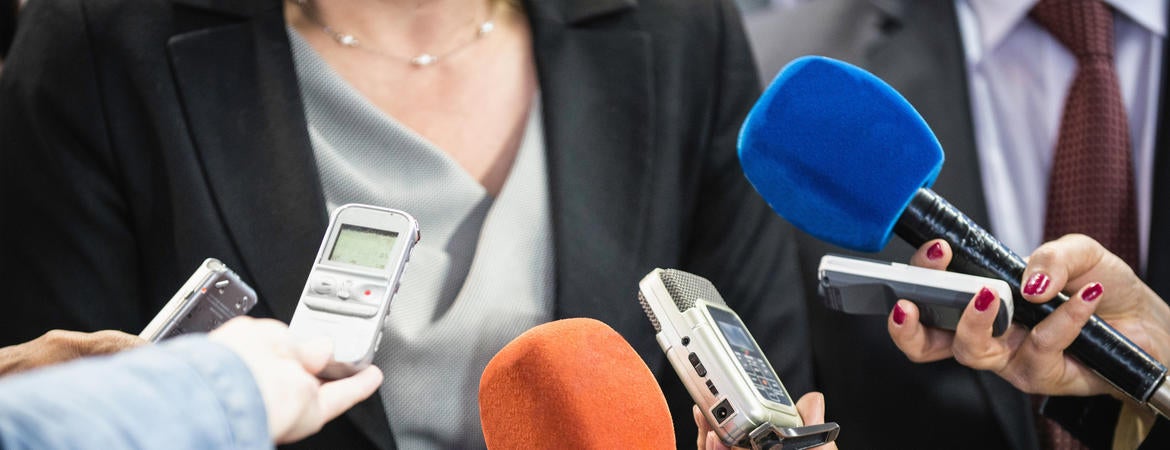
Kirsten Gillibrand, Tulsi Gabbard, Kamala Harris, Elizabeth Warren, Amy Klobuchar — the list of women who have thrown their hats into the ring for the 2020 U.S. presidential election continues to grow.
But as they build their campaigns, these women and others who follow in their footsteps might want to heed the results of a new study published by a trio of political scientists from the University of California, Riverside; Georgia State University; and the University of Mississippi.
The researchers compared the approval ratings of more than 150 male and female presidents in 20 Latin American and Asian democracies. Through their analysis, they sought to answer one question: Does the public support male and female presidents similarly?
Their findings, published last month in the British Journal of Political Science, suggest that female presidents are decidedly less popular than their male counterparts upon entering office. In addition, these women experience shorter “honeymoons” before their approval ratings begin to dip, and their ratings suffer steeper declines over the course of their terms in office.
“The effect of the sex of a president on approval is very dramatic,” said Miguel Carreras, an assistant professor of political science at UC Riverside and one of the paper’s authors. “As researchers, we weren’t necessarily expecting such a large effect.”
Carreras and his co-researchers, Ryan E. Carlin of Georgia State University and Gregory J. Love of the University of Mississippi, posited that ingrained gender stereotypes play an outsize role in determining public approval of elected officials.
To test their theory, the researchers gathered data from third-wave democracies with presidential systems in 18 Latin American countries as well as the Philippines and South Korea. Their final sample included 150 presidential administrations spanning from the 1970s to 2017, with 10 of the administrations classified as female-led.
The researchers enlisted the help of the Executive Approval Project, an initiative on which Carlin, Love, and others collaborate, for access to survey data from both public and private polling firms for each country included in the sample. This allowed the researchers to devise a system for comparing overall approval ratings.
Moreover, Carlin, Carreras, and Love also gauged how male and female presidents’ perceived handling of three key issue areas — corruption, security, and the economy — affected their approval ratings, and whether a president’s sex seemed to have any bearing.
To estimate corruption, the researchers turned to the corruption index compiled by Varieties of Democracy, or V-Dem, which weighs perceptions of both a country’s executive leader’s corruption and corruption across its public sector as a whole.
To quantify physical security, Carlin, Carreras, and Love evaluated both in-country crime rates and annual homicide-rate data published by the United Nations. They also measured a second indicator of security, terrorism, using the open-source Global Terrorism Dataset.
Lastly, the researchers assessed economic conditions using data from the World Bank’s World Development Indicators to measure each country’s gross domestic product per capita growth and natural log of inflation.
The results of their analysis confirmed the researchers’ theory that “female presidents are, generally, viewed with a more critical eye than male leaders and their popular support suffers in return,” they wrote. The study demonstrated that female presidents are less popular on average than their male counterparts; additionally, its results suggested that perceived weakness in key issue areas led to more pronounced downturns in approval ratings for female presidents.
In particular, women in executive roles saw their public standing suffer greater damage when they were associated with corruption or security failures.
“Mounting corruption perceptions have essentially no effect on male presidents’ approval ratings but significantly, and substantially, damage public support for female presidents,” the researchers wrote. Likewise, “the popularity of female leaders is, indeed, more sensitive to that of male leaders to terrorist attacks and homicide rates.”
The analysis, however, revealed no major differences between how female and male presidents are supported based on economic outcomes — possibly because perceived economic prowess (or weakness) isn’t as closely associated with gendered traits, the researchers said.
Conversely, Carreras noted that women in power are likely judged more harshly for perceived security failures because competency in handling such issues is associated with stereotypically masculine traits and behaviors.
“There’s a stereotype that women are ‘soft’ and might not be able to deal with a security crisis or a war, for example,” he said. “But if they’re ‘too aggressive’ or try to show too much ‘masculinity,’ they might be accused of not being ‘nice’ or ‘feminine’ enough. It’s a difficult line for women to walk when it comes to satisfying people; whichever direction they take, they’re likely to run into problems.”
Similarly, because women are often considered “morally superior” to men, and thus more honest and trustworthy, they tend to pay a higher price — namely in the form of diminished levels of public support — when they’re tied to claims of political corruption.
Carreras said the research highlights the need for all citizens to be more cognizant of their own implicit prejudices when evaluating elected officials.
“Even women hold other women to higher standards, and that’s partially a result of the ways in which we’ve been socialized,” he said. “These biases can certainly be hard to get rid of, but fixing the problem starts with awareness.”




